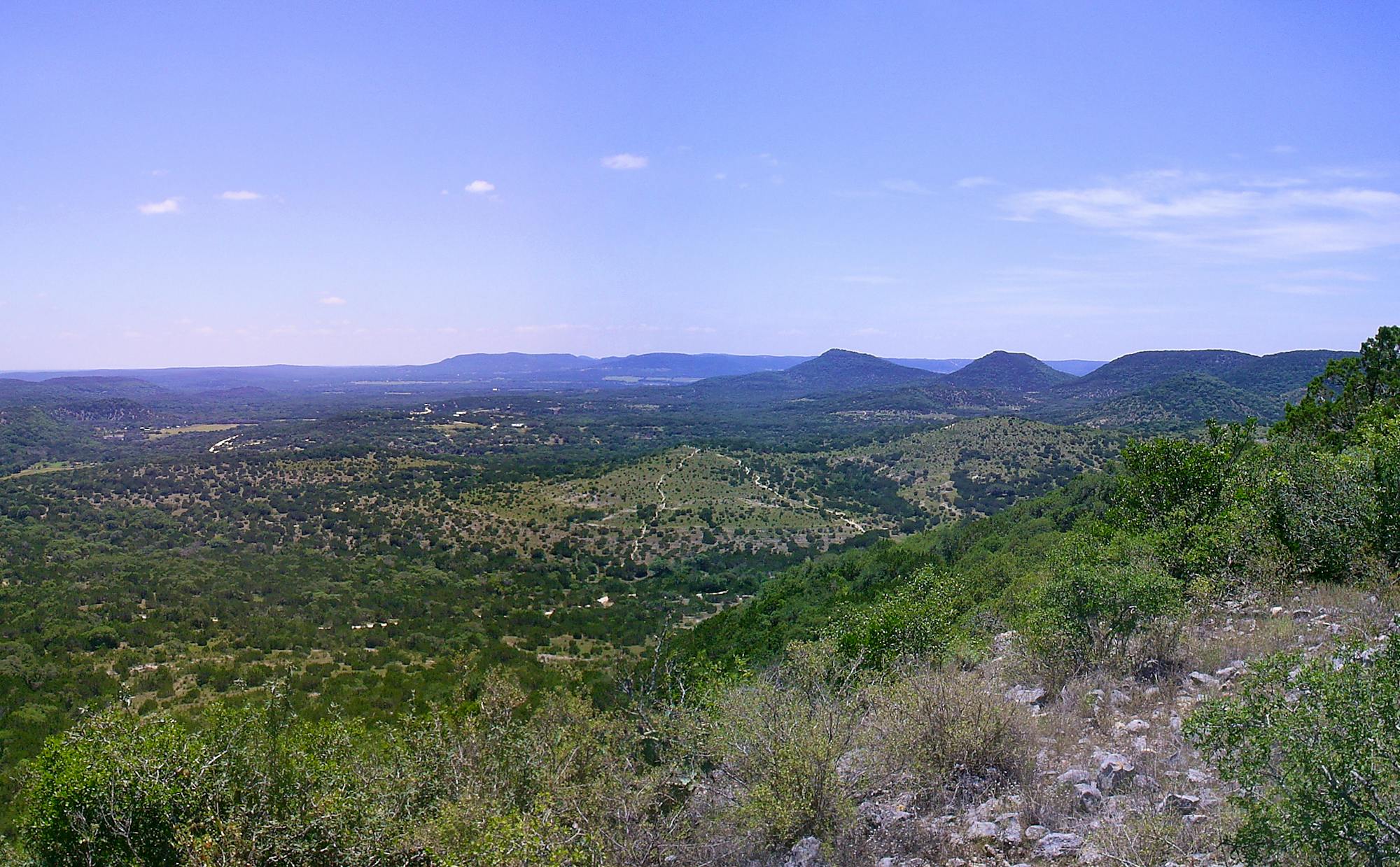The Texas Hill Country region is located atop the Edwards Plateau in the heart of central Texas.
The region contains one of the most rapidly growing urban corridors in the United States, stretching over 100 miles between the San Antonio and Austin metropolitan regions. Comprised of three main aquifers, the Edwards, Edwards-Trinity, and Trinity, the Hill Country is defined by its rivers, creeks, springs, canyons, low-lying hills and rugged terrain. A karst transition zone dividing the Texas high plains and the coastal plains, the Hill Country is home to numerous endemic species, like the Golden cheeked warbler and the Bone Cave harvestman spider. The main threats to species throughout this region are primarily related to urban development and energy conveyance, as the fossil fuel industry based in the Permian basin of West Texas builds more pipelines across this fragile ecosystem to reach refineries and ports on the Gulf coast.
The golden-cheeked warbler is a small songbird with striking yellow markings on its cheeks. The warbler migrates from Central America to Central Texas every spring to reproduce. The mature Ashe-juniper and oak woodlands of the Hill Country are the only place in the world where the warbler nests. Clearing of the warbler’s habitat for ranching and urban development has long endangered the songbird, which was protected under the Endangered Species Act in 1990. Between 1999 and 2011, 29 percent of the warbler’s habitat was destroyed due to urban growth.
The Bone Cave harvestman spider is an arachnid memorable in name and appearance that dwells in a region populated with imperiled karst invertebrates of similar renown (Coffin Cave mold beetle, Tooth Cave spider, Tooth Cave ground beetle, Tooth Cave pseudo-scorpion, Kretschmarr Cave mold beetle, Bee Creek Cave harvestman). This pale orange-colored eyeless spider dwells in subterranean limestone caves of the Texas Hill Country, in and just north of the city of Austin. Loss of habitat is a significant threat to these tiny colorful Texans, with development in the region leading to the loss of endemic cave environments. The species was added to the Endangered Species List in 1989. In addition to challenges on the landscape, in recent years the Bone Cave harvestman has faced legal challenges, overcoming efforts to remove the species from the Endangered Species List in 2017.
Defenders has a history of endangered species advocacy in the Texas Hill Country. Defenders, along with its allies, recently was successful in maintaining federal protection for the Golden-cheeked warbler despite pressure from Texas land developers to delist it. We use scientific and legal tools to advocate for imperiled species, including spatial analysis and species conservation reports to identify threats to species, and petitions, public comments, and litigation to compel action on their behalf. The creation of a Texas-based field office in Austin in 2018 positions Defenders in the heart of the Hill Country, allowing us to develop a place-based outreach program focused on collaboration with those who own, lease, and work Texas lands. Our Texas-based staff is also working to find ways to better engage stakeholders throughout the region to apply best practices for smart growth that allows these species to live alongside our growing human population.








